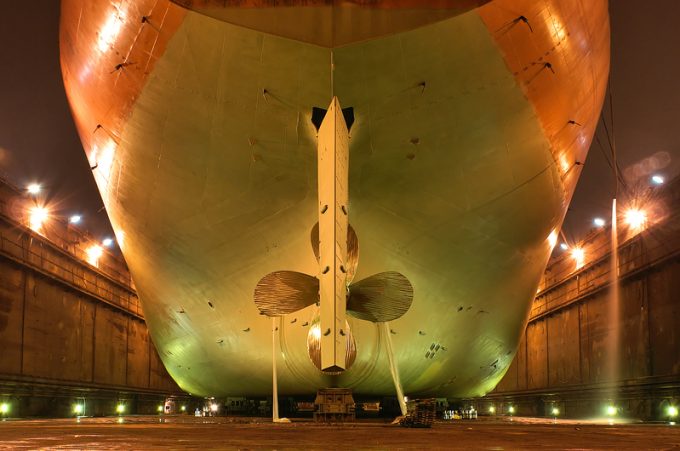Liner oversupply problem being masked by Suez Canal diversions
The Red Sea crisis, driving extended voyage times around Africa, is creating simulated cargo demand ...
GM: RAISING THE ROOF GGM: IN FULL THROTTLE GZIM: MAERSK BOOST KNIN: READ-ACROSSMAERSK: NOT ENOUGHMAERSK: GUIDANCE UPGRADEZIM: ROLLERCOASTERCAT: HEAVY DUTYMAERSK: CATCHING UP PG: DESTOCKING PATTERNSPG: HEALTH CHECKWTC: THE FALLGXO: DEFENSIVE FWRD: RALLYING ON TAKEOVER TALKODFL: STEADY YIELDVW: NEW MODEL NEEDEDWTC: TAKING PROFIT
GM: RAISING THE ROOF GGM: IN FULL THROTTLE GZIM: MAERSK BOOST KNIN: READ-ACROSSMAERSK: NOT ENOUGHMAERSK: GUIDANCE UPGRADEZIM: ROLLERCOASTERCAT: HEAVY DUTYMAERSK: CATCHING UP PG: DESTOCKING PATTERNSPG: HEALTH CHECKWTC: THE FALLGXO: DEFENSIVE FWRD: RALLYING ON TAKEOVER TALKODFL: STEADY YIELDVW: NEW MODEL NEEDEDWTC: TAKING PROFIT

“If you look at the market right now, it is easy to take the position that carriers have massively overordered,” analyst Lars Jensen told The Loadstar Podcast last week.
He explained that with ageing tankers and bulk ships also needing to abide by IMO decarbonisation rules, “this could easily overwhelm the shipyards with orders”.
He added: “That means in three or four years a container line might want new ships, but either can’t get them because there is zero shipyard availability, or they are going to be phenomenally expensive.
“This will be the shipyard version of what the carriers did during the pandemic.”
A report released today supports this theory: both newbuild and retrofit yard space is too constrained to provide sufficient capacity for meeting the IMO’s 2030 ‘indicative checkpoint’.
According to the ClassNK report, some 80m gross tonnes (GT) of zero-emission newbuilds will need to be introduced annually for 14 years to meet IMO targets for 2040.
To put this into perspective: according to Clarksons data, even amid the ongoing vessel-ordering bonanza, just 31.2m GT had been delivered, across all vessel types, by the end of last year, implying that shipyard capacity must nearly triple to meet ClassNK’s projections.
Retrofitting could be one answer: The Loadstar has previously discussed how retrofitting vessels was likely to reduce the carbon emissions associated with construction of new hulls. But according to Lloyds Register’s Engine Retrofit Report 2023, there are only 135 vessels designated “ready” to be converted to methanol or ammonia, and only 76 capable as-is, either in service or under construction.
The report found there was a “maximum addressable market” of up to 12,900 large ships – containerships and other types including bulk carriers, tankers and cruise ships – and “only a small number”, generally those under 10 years old, will be retrofitted.
“Converting even a fraction of this potential market will require new capabilities and technologies from ship designers, shipyards and operators,” it said.
Engine manufacturer MAN Energy Solutions has claimed as many as 2,300 of its in-service engines could be retrofitted to run on green fuel, but added that, while a large number of vessels may be suitable for a retrofit, they lack the ‘-ready’ class notation.
To make matters worse, ship engine retrofits have a chequered history, which discourages investment. In one infamous case, the cost of an LNG retrofit on Hapag-Lloyd’s Brussels Express over-ran to $35m. This, however, did not stop Hapag Lloyd moving to perform methanol retrofits on as many as 60 vessels, in a move announced in July.
In another finding, ClassNK’s study again reiterated the “disastrous consequences” of switching to some fuels considered ‘transition fuels’ by shipping, including grey hydrogen, grey ammonia and grey methanol. Where ‘well-to-tank’ emissions were taken into account, these fuels actively increased carbon emissions, compared with a ship burning conventional fuels, by between 11% and 38%.
“When evaluating GHG intensity over the entire life cycle (WtW), it should be noted that fuels like hydrogen, ammonia, and methanol derived from natural gas may have GHG intensity higher than conventional fuels,” ClassNK noted in its report.
Listen to Lars Jensen, CEO Vespucci Maritime, explaining that container lines may not have over-ordered, but instead taken steps to avoid decarbonisation-driven shipyard capacity shortages in the coming years.
Comment on this article